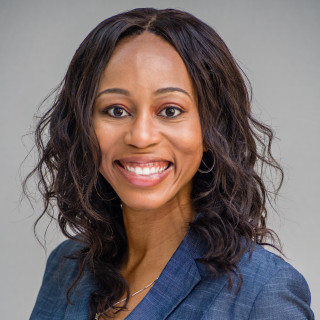 As a graduating medical student with around $200,000 in student loans, I’m planning to enroll in Public Service Loan Forgiveness. When I shared this proclamation with my classmates they had mixed reactions and several questions. Just in case you’re wondering the same thing, I’ve answered the common questions I get.
As a graduating medical student with around $200,000 in student loans, I’m planning to enroll in Public Service Loan Forgiveness. When I shared this proclamation with my classmates they had mixed reactions and several questions. Just in case you’re wondering the same thing, I’ve answered the common questions I get.
What is Public Service Loan Forgiveness?
Public Service Loan Forgiveness (PSLF) is a government-sponsored student loan forgiveness program. If you work in public service for a non-profit organization, academic institution, or government agency and make 10 years of on-time qualifying monthly payments towards your student loans, the government will “forgive” your remaining student loan balance.
This program was designed for public servants like teachers who have lots of student loan debt but may be unable to pay it off in a reasonable time, partly because the salary they receive working in public service is less than the salary they would have received in a different profession. The goal of the program is to allow people with a passion for public service to pursue careers in that field without saddling them with an eternal burden of student loans.
The great thing about this program is that many health care professionals qualify, too. If doctors complete residency and choose to work in academic medicine or some other qualifying non-profit health care facility, we can get hundreds of thousands of student loans forgiven via PSLF as well.
Wait, Isn’t It Sketchy?
I’ll admit, there has been some bad press about PSLF. A couple years ago, people who thought they met the requirements could apply for loan forgiveness. Unfortunately, many people were not granted this forgiveness. Hearing this news scared many people who were depending on this program.
Although this is less than ideal, there are several reasons why previous applicants were unable to get their loans forgiven. When the program first came out, the rules were vague and there was a lot of misinformation. Many people who thought they qualified for the program did not actual qualify for it. Nowadays, the requirements for PSLF are much easier to understand and are clearly stated here. Now that people are aware of how to enroll into the program, there is a good chance that people who have met the qualifications will get their student loans forgiven in the future.
Is It Wise to Depend on This Program?
With recent proposals to eliminate PSLF, or limit how much money can get forgiven through it, many doctors are worried it may change in the future and would rather pay off their student loans another way. That’s understandable. However, I’m still planning to enroll in PSLF. Why? Because PSLF could save me from paying back nearly $200,000 in student loans. It is too good of a deal to pass up.
I could work insanely hard to pay off my student loans shortly after finishing residency and fellowship, but doing so would cause me to live a less-than-ideal life. My student loan payment could be nearly $3,000 a month (almost double the cost of a mortgage). Pursuing PSLF allows me to enroll in an income-driven repayment plan that never charges me a payment higher than 10 percent of my income. With PSLF, I can use the money I would have spent on student loans to save up for a down payment on a home, replace my old car, finance my (future) kids’ college educations, or save for retirement.
How Do You Qualify?
According to the website, you need to have direct federal student loans, work full-time in public service via a 501(c)(3) nonprofit or academic institution, and submit 10 years’ worth of on-time qualifying payments (i.e. Pay the full amount of your student loan repayment each month through one of the income-driven repayment plans).
How Do You Enroll?
Go to the student loan website, fill out sections one and two on the PSLF enrollment form, and have your employer fill out Sections three and four. Once that is complete, you fax the entire form to the “FedLoans” sub-department of the Federal Department of Education. Fedloans will verify whether you submitted the paperwork correctly and confirm whether you qualify. You must contact Fedloans annually to verify all your payments and re-submit the employer verification enrollment form so they know you still work in public service for a qualifying organization. If you have a different loan servicer (such as Nelnet, Navient, Great Lakes, etc), your loan servicer will be switched to Fedloans as soon as you enroll into Public Service Loan Forgiveness.
How Am I Protecting Myself If Something Goes Wrong?
Going for PSLF is a risk. There is a good chance that the government might drastically change the rules of a program that allows relatively high-earning doctors to avoid paying hundreds of thousands of dollars in student loans. If you are still going for PSLF like I am, you need to protect yourself.
How am I doing this? By creating a “student loan investment side fund.” Instead of using the money I’m saving in PSLF to buy a better car, a larger home, or live a wealthy “doctor” lifestyle, I’ll save that money in a high-yield savings account. I’ll then use money in that account to invest in a combination of real estate deals, index mutual stock funds, and money market funds. That way, if PSLF changes and for some reason I can’t get my loans forgiven, I will have created a nice nest egg of money that I can use to quickly pay off the rest of my student loans. If the PSLF program stays the same, then I can keep on investing that money and use it to pay for my (future) kids’ college education or my retirement. The opportunity to get hundreds of thousands of dollars in student loans forgiven is worth taking a risk. The best way to take this risk is to protect myself just in case something happens.
Altelisha Taylor is a graduating medical student from the University of Florida College of Medicine who will begin family medicine residency training at Emory University July of 2019. She plans to pursue a career in primary care sports medicine and enjoys writing articles on personal finance and real estate on her blog CareerMoneyMoves.com.
Image by Dooder / Shutterstock







